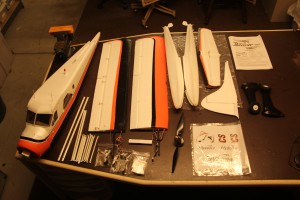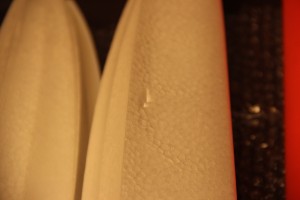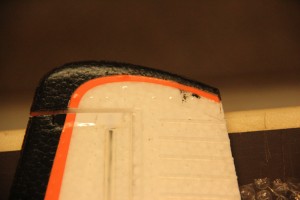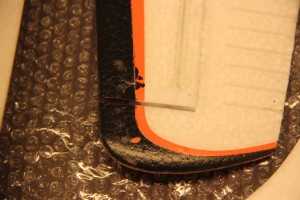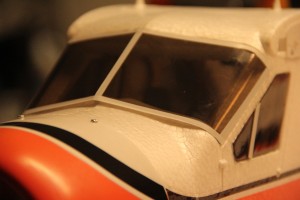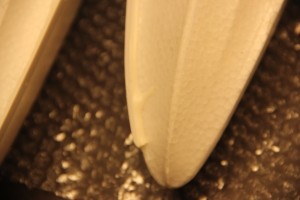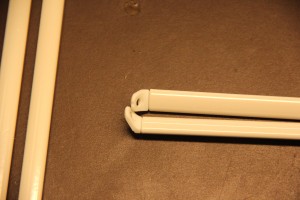Though I’ve flown the Top Flite giant scale Mustang a half dozen or so flights in the past, yesterday was the first time since I swapped in the Power safe receiver and moved it over to the DX-18 that I’ve had it in the air. It was a sort of second maiden flight.
All in all, the weather was just about perfect once a rain storm cleared. The wind was almost zero and the temps were in the high 70s. The plane seemed to fly well with only the landing being a bit tricky because my flap mix resulted in a marked nose down pitch. This meant that I could land without flaps… something I don’t recommend as the plane requires a fair amount of airspeed to fly… or with flaps while constantly holding in some up elevator to compensate. I chose the “with flaps” option and managed to get it down with only a minor bounce or two.
I decreased the flap mix a bit after the first flight and tried again, this time getting in some knife edge flight and some high speed, relatively low passes with good results. It appears I could use some more rudder throw and it was programmed for triple rates but I was unsure of my switchology and this was not the time to start flipping to find it so I will try some higher rates on the next flight once I am confident of which switch does the trick. When it came time to land I found the same issue as before, though not as bad. I will reset the mix to put in some up elevator for the next flight and see how that works out. I guess this plane requires up elevator mixing with the application of the flaps instead of the expected down trim to prevent ballooning. Looks like the drag wins out over the increased lift in this case. Again the landing was at least “not damaging” but the rain was threatening so we packed it in for the day.
Today, upon recharging the flight packs I found they took 183 and 249 to top off the starboard and port packs. Between the two flights this was about 12 minutes of flight time so it seems to take about 35mah per minute of flight. With two 2300 LiFes on board and an average 10 minute flight…. well I don’t think I’ll worry much about charging between flights if I come with full packs! I can monitor the idle and in flight voltages via the Telemetry system but will eventually likely need to rig a way to monitor the flight packs “at rest” at some point in the future.
Telemetry tells me I hit almost 4 Gs positive and 1 negative during these flights with a max airspeed of about 85 mph. Temperatures on the motor stayed in the range of about 200-230 degrees (F) once it was warmed up, which seems to be a fairly normal range from what I’ve seen so far. Static RPMs hit almost 6000 with the 22×10 Xoar but showed over 10,000 in the air. I can’t really believe that is occurring… must be some sort of telemetry glitch. I’ll eventually have to look into that to see if I can figure out a way to refute that and fix or at least explain that odd readings. I plan on flying the Mustang again soon in preparation for our club Airshow coming up on July 28th. I’ll try to post more as I get some more time on the airframe.




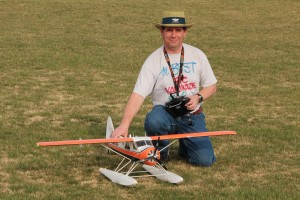
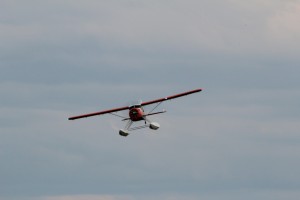
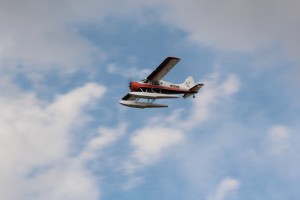
![IMG_3111[1]](http://flyrc.info/wp-content/uploads/2013/03/IMG_31111-300x200.jpg)
